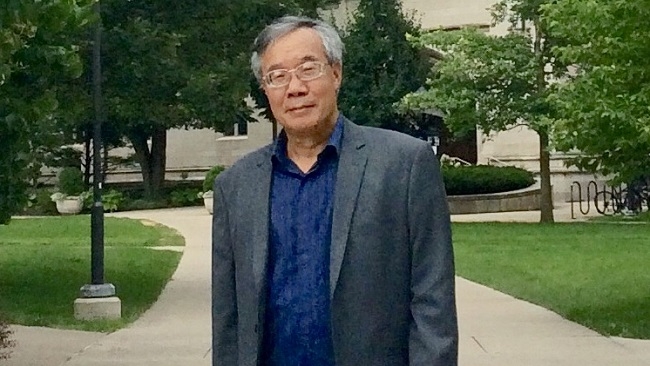Legalizing University Autonomy from the Perspective of a Former Harvard University Advisor
If we cannot establish a proper mechanism for university autonomy, it will be difficult to harness the necessary resources and creativity for development.
The Ministry of Education and Training has recently announced a wide-ranging consultation on the draft law amending and supplementing several provisions of the Education Law and the Higher Education Law. However, in reality, over the years, the more it is amended, the more complicated it becomes! How to comprehensively amend the law to solve the most critical issues and move towards a humanistic and liberating education system remains a big question.
TheLEADER conducted a special report on education with the participation of Mr. Tran Duc Canh, discussing in-depth the most pressing issues in secondary and higher education today, true educational investment models, and more comprehensive critical feedback from both international and Vietnamese perspectives.
 Mr. Tran Duc Canh
Mr. Tran Duc Canh
|
Mr. Tran Duc Canh was formerly the Director of Training and Human Resource Development for the state of Massachusetts (USA) and a member of the Northeast Regional University Council. He has also been an admissions advisor for Harvard University for many years. He was appointed by Prime Minister Nguyen Xuan Phuc to the National Education Council and Human Resource Development for the 2017 – 2021 term. |
One of the main issues in this draft amendment to the Higher Education Law is university autonomy. What are your thoughts on this matter?
Mr. Tran Duc Canh: I have contributed my opinions to this draft amendment of the Higher Education Law and have paid particular attention to the section on university autonomy. If we cannot establish a proper mechanism for university autonomy, it will be difficult to harness the necessary resources and creativity for development.
The university autonomy model has been well-established in developed countries and was also applied in Southern Vietnam before 1975, but it still seems very new today.
In university autonomy, there are always three main aspects: financial, personnel, and academic; the first two are means, and the latter is the ultimate goal. To successfully establish a mechanism for university autonomy, the University Council or the Board of Trustees must be the focal point. The current supervisory model needs to be transitioned to a state management model as prescribed by law.
Although the structure, duties, powers, responsibilities, and relationships between the departments need to be clarified, I think it is a reasonable first step in the process of reforming the current higher education management model.
In university autonomy, how should the roles of the University Council or Board of Trustees and the President be clearly defined in terms of duties and responsibilities to avoid overlap and ensure smooth and effective operation?
Mr. Tran Duc Canh: I am aware that 23 public universities have piloted the university autonomy model, including the role of the University Council as per the current Education Law. However, the role of the University Council needs to be further clarified in terms of responsibilities and powers in school management, according to the draft amendment of the Higher Education Law.
In the public university management model in other countries, the central or local government is usually responsible for approving the list of University Council members for a term, not necessarily following the term of the appointee, but divided to ensure continuity and stability. For example, if the term of University Council members is 4 or 6 years, every two years, a half or a third is re-elected.
The University Council has the right to select the President and approve Vice-President or equivalent positions. The President is responsible for reporting to the University Council and seeking approval for several pre-determined items before implementation. However, the working mechanism needs to balance the powers and responsibilities between the President and the University Council to minimize “overstepping,” which can lead to conflicts.
The number of members in the University Council does not need to be too large, but quality should be prioritized, reducing or eliminating dual roles, to avoid conflicts of interest. Due to the operational mechanism following a unitary model, dual roles are considered normal, but in advanced countries, they are difficult to accept. I believe the dual roles in the University Council in the draft amendment of the Higher Education Law are too large and need to be reconsidered.
The lack of clarity in the concept and management policy of the non-public university system in Vietnam today, and the differences in principle between profit and non-profit models?
Mr. Tran Duc Canh: There are four types of university models in other countries:
Public schools – managed by the state, which may provide all or part of the funding for the school to operate, with different public school management models between countries.
Semi-public schools – established through a partnership between the private sector and the state, forming a public-private school model in various forms.
Private schools – operate and are managed according to the private company model.
Non-profit private schools (NPOs) – managed and operated according to the social organization model.
The public, semi-public, and private school models are relatively clear, but the concept of NPOs is still very new in Vietnam. In recent times, some schools have claimed to be “non-profit,” but according to the NPO university model in developed countries, Vietnam does not have any schools that meet the basic criteria of this model.
First, there is no personal ownership, shareholders, or profit-sharing. Profits are retained by the school for reinvestment. Second, accountability and transparency to the community. Third, it is a self-managed social organization according to the law and the organization’s operating regulations.
The purpose of NPOs is to attract resources from society, contributing to the development of higher education. As a public-serving school model, state support is essential, such as VAT exemption, corporate tax, land tax, and other sources.
Individuals and companies contributing to non-profit schools may be exempt from tax on their contributions. In general, NPOs can develop well if a mechanism is established to create motivation and an environment for societal contributions. Twenty of the top universities in the US follow the NPO model.
To ensure the smooth and effective operation of the NPO model, this type of school needs to have its fundamental operating principles legalized in this amendment to the Higher Education Law.
Although there is no university following this model yet, legalizing the mechanism for such schools now will, I believe, lead to the emergence of this type of school in the near future.
The State invests 20% of its budget in education annually, a significant proportion compared to other countries. However, the quality of education still has many issues. How can we attract domestic and foreign resources to invest in education, particularly higher education?
Mr. Tran Duc Canh: It is true that the State budget investment in education is very large, about 20%, equivalent to 10 billion USD, mostly focused on primary to secondary education. The need for investment in the development of education at all levels remains very high, from infrastructure, and programs, to teaching staff.
In my opinion, focusing on resources to improve the quality of education is only part of the story. The other part must be a strong and comprehensive reform of the current education system, both hard and soft, to hope to revive education and catch up with other countries in the region.
The demand for the development of private education will remain high, helping to reduce the burden on public schools, and at the same time meeting part of the family’s needs for a structured curriculum.
Regarding higher education, there are currently 65 non-public universities, including 5 foreign-owned schools, compared to 170 public schools, accounting for 27.6%. If we compare this with the ratio of public and non-public schools in Japan, private schools account for 77.5%, the opposite of Vietnam.
Due to the structure and socio-economic conditions, Vietnam’s public-private education system differs from developed countries. Still, I believe that the development direction of non-public education will mature and stabilize in the future. The goal is to help reduce the burden on public schools, increase training quality, and create diversity and competition in the higher education system.
On one hand, investment in the development of non-public schools should be encouraged, but is there a risk of over-commercialization of education, as has happened in some non-public universities today? How can we create healthy competition between universities, contributing to a thriving educational environment?
Mr. Tran Duc Canh: Vietnamese society is in the early stages of development towards a “market” direction, where the operational mechanism may not yet be fully in place, leaving a gap. Even with a complete mechanism, many issues still need to be addressed in practice.
But the “gap” while waiting for the “market” mechanism to be perfected has been too long, leading to countless other issues, many of which have become half-baked. The education sector itself has not escaped this situation.
Even in education, when a fair playing field and competitive environment are created, the market will largely decide on its own. The Ministry plays the role of state management and supervision and only intervenes when necessary to regulate the market’s shortcomings, mostly acting as a true referee, then everything will be fine. If a school does not operate well and effectively, the result will be closure or dissolution.
The price to pay for a “market” is not cheap, but only by going through it can we hope to mature and compete in an integrated world.
Source: http://theleader.vn/luat-hoa-tu-chu-dai-hoc-duoi-goc-nhin-cua-nguyen-co-van-dai-hoc-harvard-2018050809102256.htm

